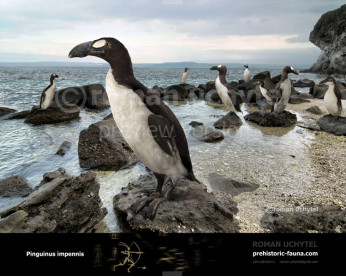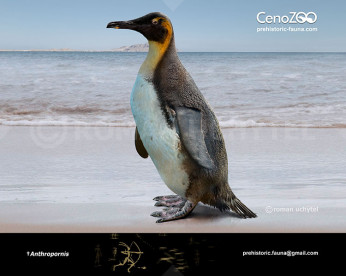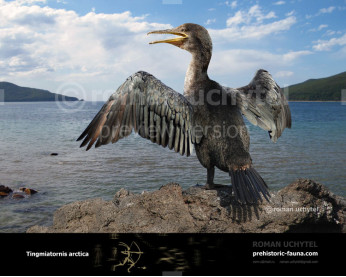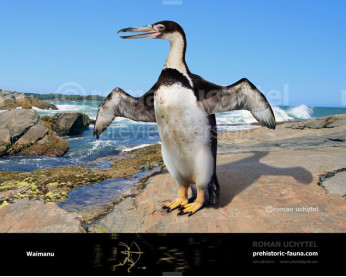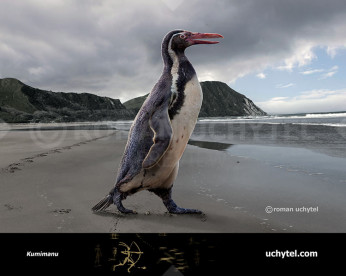Palaeeudyptes
541541
Colossus penguin (Palaeeudyptes antarcticus (Huxley, 1859))
Class: Aves
Order: Sphenisciformes
Family: Spheniscidae
Subfamily: †Palaeeudyptinae
Time period: Middle Eocene–Late Oligocene (Seymour Island, Antarctica and New Zealand)
Size: more than 1,7 m in height, 65 - 110 kg of weight
Palaeeudyptes is an extinct genus of large penguins, currently containing four accepted species. They were probably larger than almost all living penguins, with the smaller species being about the size of an emperor penguin and the largest ones having stood about 2 metres tall.
Of the four species, two (P. gunnari and P. klekowskii) are known from numerous remains found in Middle or Late Eocene strata (34 to 50 MYA) of the La Meseta Formation on Seymour Island, Antarctica.
Palaeeudyptes klekowskii was until recently thought to have been approximately the size of its congener Palaeeudyptes antarcticus, which would mean it was somewhat larger than the modern emperor penguin, but a new study shows it was in fact almost twice as tall. Knowledge of it comes from an extensive collection of fossil bones from the Late Eocene (34-37 MYA) of the La Meseta Formation on Seymour Island, Antarctica. P. klekowskii was at first not recognized as a distinct species, and despite the coexistence of two so closely related species of similar size as Palaeeudyptes gunnari and P. klekowskii seeming somewhat improbable, the amount of fossil material suggests that the two species are indeed diagnosably different.
Payment
You may use multiple payment methods to buy image such as credit cards, PayPal and bank transfer.
Colossus penguin (Palaeeudyptes antarcticus (Huxley, 1859))
Class: Aves
Order: Sphenisciformes
Family: Spheniscidae
Subfamily: †Palaeeudyptinae
Time period: Middle Eocene–Late Oligocene (Seymour Island, Antarctica and New Zealand)
Size: more than 1,7 m in height, 65 - 110 kg of weight
Palaeeudyptes is an extinct genus of large penguins, currently containing four accepted species. They were probably larger than almost all living penguins, with the smaller species being about the size of an emperor penguin and the largest ones having stood about 2 metres tall.
Of the four species, two (P. gunnari and P. klekowskii) are known from numerous remains found in Middle or Late Eocene strata (34 to 50 MYA) of the La Meseta Formation on Seymour Island, Antarctica.
Palaeeudyptes klekowskii was until recently thought to have been approximately the size of its congener Palaeeudyptes antarcticus, which would mean it was somewhat larger than the modern emperor penguin, but a new study shows it was in fact almost twice as tall. Knowledge of it comes from an extensive collection of fossil bones from the Late Eocene (34-37 MYA) of the La Meseta Formation on Seymour Island, Antarctica. P. klekowskii was at first not recognized as a distinct species, and despite the coexistence of two so closely related species of similar size as Palaeeudyptes gunnari and P. klekowskii seeming somewhat improbable, the amount of fossil material suggests that the two species are indeed diagnosably different.

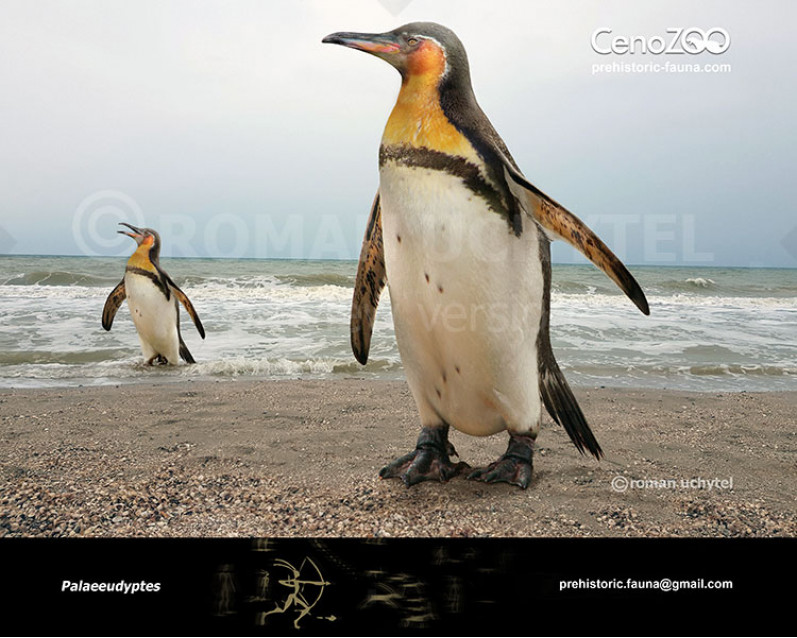
-797x638.jpg)
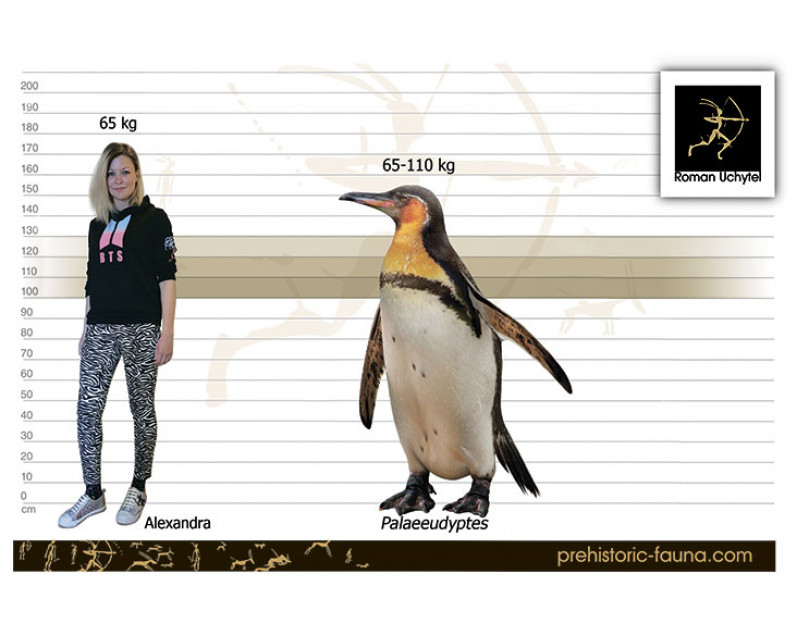

-70x56.jpg)

